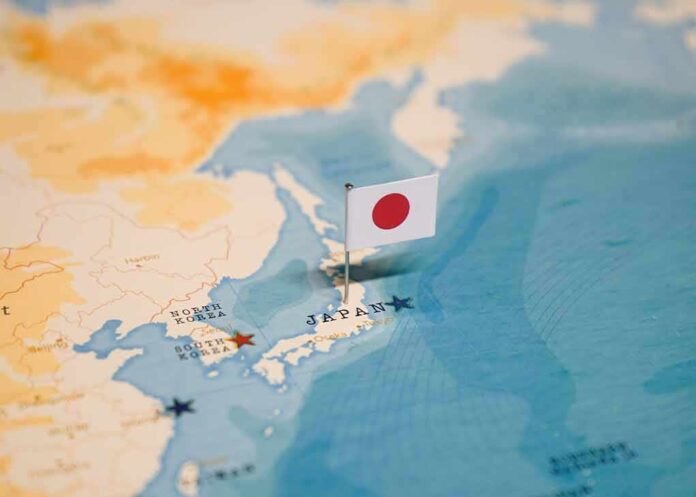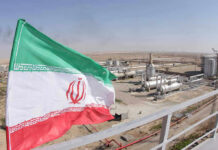Japan’s revolutionary Hatsushima Station, the world’s first 3D-printed train station, was constructed in just six hours, cutting costs in half while demonstrating how advanced technology is reshaping infrastructure development in a nation struggling with labor shortages.
Quick Takes
- Located in Wakayama Prefecture, Hatsushima Station was 3D-printed and assembled in a remarkably short timeframe, replacing a 75-year-old wooden structure.
- The project collaboration between Serendix Corporation and West Japan Railway (JR West) demonstrates how 3D printing technology can address Japan’s serious labor shortages and aging workforce challenges.
- The station costs about half what traditional construction would require while providing earthquake resistance similar to reinforced concrete houses.
- Custom features include local symbols such as mandarin oranges embossed on its sides, preserving local cultural identity.
- Similar technology could revolutionize infrastructure development globally, reducing construction time and environmental impact.
Building a Station in Hours, Not Months
The West Japan Railway Company, also know as JR West, has made history by constructing the world’s first 3D-printed railway station in just six hours. Located in Arida within Wakayama Prefecture, Hatsushima Station replaced an outdated wooden structure that had served the community for over 75 years. The project represents a significant milestone in construction technology, demonstrating how innovation can address practical challenges facing Japan’s infrastructure maintenance programs, particularly in rural areas with declining populations.
The station’s foundations and exterior structure were 3D-printed in a factory over seven days, then transported to the site where assembly took between three to six hours. With dimensions of 2.6 meters in height, 6.3 meters in width, and 2.1 meters in depth, the compact yet functional station provides approximately 10 square meters of usable space. This efficiency in construction represents a dramatic improvement over traditional methods, which typically require months of work and significantly more personnel.
Solving Japan’s Construction Industry Challenges
The Hatsushima Station project directly addresses two critical problems facing Japan: an aging population and severe labor shortages in the construction industry. With fewer workers available and rural populations shrinking, maintaining infrastructure in remote areas has become increasingly challenging and expensive. The 3D printing technology offers a practical solution by reducing the manpower needed while maintaining structural quality and safety standards.
“We believe that the significance of this project lies in the fact that the total number of people required will be reduced greatly,” said Ryo Kawamoto of JR West.
The station serves a small town with only 530 daily riders and typically sees just one to three trains per hour. Despite this modest usage, maintaining essential transportation infrastructure remains vital for rural communities. By implementing cost-effective construction methods, railway operators can continue providing necessary services despite financial constraints and workforce limitations that might otherwise force station closures or reduced maintenance.
Engineering Innovations and Cost Benefits
The Hatsushima Station shelter is constructed from mortar reinforced with steel and concrete, providing durability and resilience. JR West confirmed the structure offers “earthquake resistance similar to that of reinforced concrete houses,” an essential feature in Japan’s seismically active environment. Beyond structural integrity, the project delivers significant cost benefits, with expenses approximately half those of conventional construction methods.
JR West’s Naohiro Ohashi said that with conventional methods, “it takes a month or two to build a roof and walls. We were able to install them in about two hours—so there is an advantage in terms of speed.”
The design incorporates local cultural elements, featuring embossed mandarin oranges and scabbardfish on its exterior, reflecting the region’s agricultural and fishing heritage. These thoughtful details demonstrate how modern construction techniques can preserve cultural identity while advancing technological capability. The station’s compact design is tailored specifically to meet the community’s needs while minimizing material usage and construction waste.
The Future of Infrastructure Construction
The Hatsushima Station project represents more than just a single innovative building; it demonstrates the potential for 3D printing technology to transform how infrastructure is developed and maintained worldwide. Similar approaches are already being tested in France and the United States, pointing to a global shift in construction methodologies. For aging economies with labor shortages, these techniques could become essential for maintaining critical infrastructure.
“I hope that they can make more buildings with 3D-printing technology,” remarked local commuter Yui Nishino, who witnessed the rapid assembly process. “Watching it, the work is progressing at a speed that would be impossible with normal construction.”
By reducing waste, accelerating build times, and lowering costs, 3D-printed construction addresses multiple challenges simultaneously. The technology’s ability to create complex designs efficiently opens possibilities for customized infrastructure tailored to specific community needs. As this approach matures and scales, we may see an increasing number of public facilities constructed using similar methods, particularly in regions facing demographic and workforce challenges similar to Japan’s.
Sources:
- https://www.sustainability-times.com/sustainable-business/as-fast-as-a-lightning-bolt-this-historic-3d-printed-rail-station-is-redefining-urban-engineering-forever/
- https://arstechnica.com/gadgets/2025/04/japanese-railway-shelter-replaced-in-less-than-6-hours-by-3d-printed-model/
- https://www.nytimes.com/2025/04/08/world/asia/japan-3d-station.html











